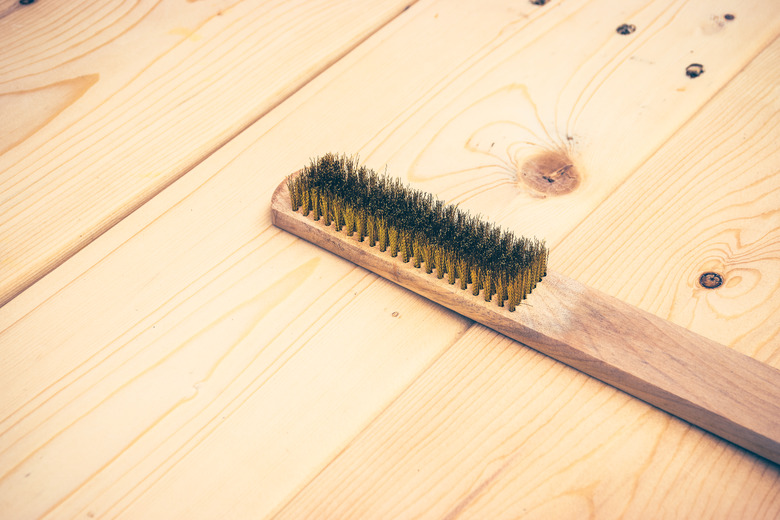How To Remove Tung Oil Finish
Tung oil, pronounced just like tongue oil, is similar to linseed, soy and walnut oils. These are all called drying oils because they sink into the wood and react with oxygen to create a sleek, slightly hardened seal that enhances the beauty of wood while protecting it from drying out. As with all things, age will begin to take its toll. Or maybe you just want a different type of finish, such as paint. Removing tung oil can be a challenge, but there are several methods to try.
Facts About Tung Oil
Facts About Tung Oil
Tung oil is extracted from the seeds of the tung tree, which is native to China and also grows in other parts of Asia. The practice of using tung oil for wood goes back hundreds of years, especially in finishing and sealing the wood on boats. It is also used to seal stone. Tung oil is food safe, so it is often used on cutting boards, tables and utensils, such as wooden spoons, salad serving forks and tongs. When tung oil is exposed to oxygen, it begins to harden into a shiny, strong outer layer. But as the years pass, this process starts to reverse itself. The tung oil breaks down and can become sticky and gummy.
Removing Tung Oil Finish
Removing Tung Oil Finish
Most tung oil used in modern finishing is not pure but has been mixed with additives and polymers to increase its strength and longevity. This means that it might not get sticky and gummy, but it also means that it can be harder to remove.
The first step in removing tung oil is to do a test spot. Start with a clean, lint-free cloth dampened with turpentine, naphtha or xylene. Apply the paint thinner to the test spot liberally. Let it sit until it starts to bubble up. Use fine steel wool to scrape up the softened tung oil. If this works and does not damage the wood, continue until the entire area is stripped. The harder the tung oil is, the harder it is going to be to remove. If solvents don't work, your only other option is sandpaper and lots of hard work.
Applying Fresh Tung Oil Finish
Applying Fresh Tung Oil Finish
Once you have removed all traces of tung oil, you can apply a fresh coat. Start with a clean surface, clear of all dust and clean of all oil stains. If you are using a polymer tung oil, such as Minwax Tung Oil Finish, make sure that you have sanded away all flaws and stains and wiped the surface clean. Do not use a sanding sealer because you want the tung oil finish to sink into the wood. Dampen a small spot on a clean, lint-free cloth and gently rub it into the surface you are finishing. Work with the grain to avoid random thick spots. You can also thin the first coat with an equal amount of turpentine to help the wood absorb it. Let each coat of tung wax dry for at least 24 hours and apply no fewer than three coats to get the best result. Be careful disposing of your cloths because some of the additives in your tung oil finish may be flammable.
Dealing With Pure Tung Oil
Dealing With Pure Tung Oil
If you have a 100 percent pure product, such as Old Master's Tung Oil, you can apply it the same way but the curing time is much longer. Soak the wood with the pure tung oil by applying it with a brush, a staining sponge or clean, lint-free cloth. Start with hard to reach places and work your way out to help avoid leaning on or brushing against fresh tung oil. You will know that the wood is fully saturated when the surface stays shiny for at least 40 minutes. Wipe away any excess with a clean cloth and let the tung oil cure for 24 to 48 hours. Repeat this process three to five times more for furniture and four to six more times with floors.
Once your entire surface is coated, you need to let it cure for a full 30 days. You can walk on floors after seven to 10 days, but only with clean shoes, though socks are better. Do not place rugs or furniture on a floor treated with tung oil until it has cured for the full 30 days. Once your surface has finished curing, keep it clean with warm water and a little dish soap.
